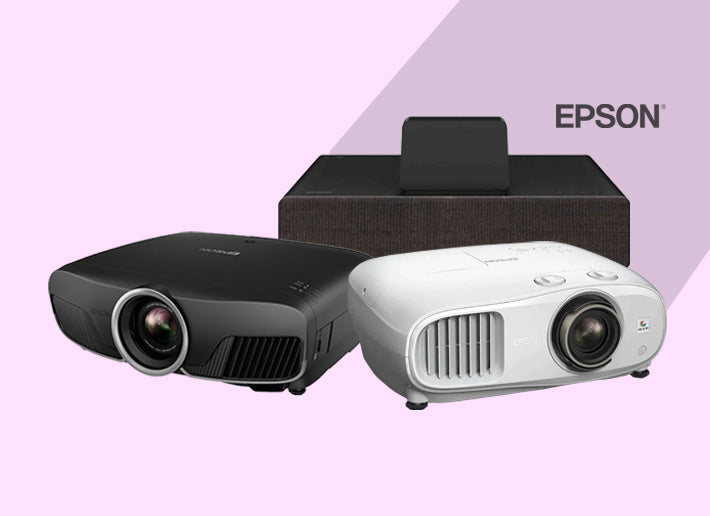Home theatre technology has evolved considerably in the last few years and stands at the precipice of a paradigm shift, significantly altering the way we consume media at home.
On a crisp summer evening in Mumbai, Sylvia settles into one of the home cinema recliners in her den, a bowl of popcorn in one hand and a Coke in the other. As she activates her home theatre with a voice command and momentarily catches a beat for the system to respond to her input, the entire wall in front of her shimmers to life, transforming into a vibrant, seamless display, courtesy of a UHD ultra-short-throw projector.
The opening scene of the newest chapter of her favourite sci-fi blockbuster unfolds and she finds herself not just watching, but stepping into an alien world. Sound swirls around her in three dimensions thanks to her Dolby Atmos-enabled speaker system, pinpointing the rustle of otherworldly foliage to her left, while an approaching spacecraft thrums ominously overhead.
This is rapidly becoming a reality for many movie enthusiasts passionate enough to devote time and attention to a setup they want to keep coming back to after a long day of work or when entertaining friends and family over the weekend. While Sylvia’s setup might sound like a prop from a futuristic film itself, industry experts say such technology is increasing in popularity faster than many imagine.
From screens that make pixels invisible to the naked eye, to sound systems that adapt to a room's acoustics in real-time, the next generation of home theatre tech promises to transport us into the heart of our favourite stories like never before. As we peer into this not-so-distant future, one thing becomes clear: the humble living room is about to become the hottest ticket in town.
The Invisible Pixel: A Visual Feast
If you're a millennial on the wrong side of 30 today, you probably remember the era of CRT televisions and first-generation flat screens. Today's displays have evolved significantly (as technology often does) and bring unprecedented clarity and realism to our viewing experience.
Pioneering display technologies such as OLED and QLED have revolutionised picture quality, offering perfect blacks, vivid colours and exceptional contrast ratios. Couple this with advancements in display resolution and dynamic range and you get a screen that looks sharper and produces much more vibrant colours. With 8K display systems proliferating the market, it boggles the mind that modern televisions have 16 times as many pixels as a FullHD TV in the late 2000s.
One of the most exciting developments in screen technology that we’ve seen in a long time came in the form of transparent OLED and micro-LED screens earlier this year. While these types of screens have traditionally only been available to enterprise customers, they are set to slowly make their way to consumers for the first time. Further advancements in ultra-sized micro-LED TVs have led to impressive features such as 40,000 local dimming zones and screens that go up to 10,000 nits in brightness (seriously bright!).
Image credit - The Verge
We’re seeing the introduction of wireless ultra-short-throw projectors, which can display a 150-inch image at 8K resolution. Some of them use projection mapping technology that can turn any surface into a veritable art canvas.

Image credit - TechRadar
There have been some notable advancements in HDR and related display technologies in the past couple of years as well. While not strictly an HDR technology, mini-LEDs have significantly improved on the performance of LCD-based HDR displays by allowing for more precise local dimming, resulting in better contrast and reduced blooming. QD-OLED is a hybrid technology which began appearing in consumer TVs in 2022 and combines Quantum Dot colour technology with OLED's self-emissive pixels, promising improved brightness and colour volume compared to traditional OLED displays.
OLED TVs have historically lagged behind LED-LCD in terms of peak brightness, but recent models have made significant strides, with some reaching over 1000 nits in small areas. TV manufacturers have refined their tone mapping algorithms as well, allowing for better handling of HDR content, especially on displays that can't reach the peak brightness levels specified in the content.
Image credit - Digital Trends
Also Read: Tips For Buying Home Theater System In India
Advancements in Home Theatre Audio: Immersion Redefined
The landscape of home theatre audio has undergone significant transformations in recent years, pushing the boundaries of immersive sound experiences. While the first TV sets most of us owned probably came with monophonic speakers that sounded below average, sound systems today have reached a point where it's hard to tell them apart from those found in the cinemas. Several important technologies have emerged and evolved over the years, contributing substantively to the whole home cinema experience and taking it to a new level (quite literally).
Dolby Atmos and DTS:X have continued to evolve, offering more refined and immersive 3D soundscapes. Whereas improved height channel utilisation has created more convincing overhead effects, enhanced audio object placement and movement have resulted in more precise sound localisation.
The future of 3D sound in home theatres also looks promising. We may see more granular object placement, potentially doubling or tripling the number of audio objects that can be simultaneously rendered. Binaural rendering techniques are being explored to create immersive 3D audio experiences through headphones.
Wireless speaker technology has progressed a lot, addressing previous concerns about latency and audio quality. The introduction of advanced wireless protocols like WiSA (Wireless Speaker and Audio Association) now offers near-lossless, low-latency audio transmission. Enhanced multi-room audio capabilities allow seamless synchronisation across multiple spaces.
Automated scene setting allows audio settings to adjust based on time of day or specific activities. Integration with other smart home devices, such as automatically lowering the volume when a video doorbell rings, creates a more cohesive home environment.
AI has revolutionised audio processing in home theatre systems to an extent. Room calibration has seen more sophisticated analysis algorithms that can account for complex room geometries. Real-time adjustment capabilities can adapt to changes in room layout or listener position. Some systems even integrate machine learning to improve calibration over time based on user preferences.
Personalised audio experiences have increasingly become a focus led by AI-driven content-aware processing that can enhance dialogue clarity or boost specific audio elements based on user preferences. Listener recognition systems can automatically switch to individual user profiles. Some advanced systems even offer mood-based audio processing that adjusts sound characteristics to match the emotional tone of the content or the listener's mood.
These advancements collectively contribute to a more immersive, flexible and personalised home theatre audio experience. As technologies continue to evolve, we can expect even more innovations that blur the line between reproduced and live sound, creating truly captivating sonic environments in our homes.
Also Read: 7 Reasons To Prefer Home Theatre Over Movie Theaters
A Peek into the Future of Home Theatre Tech
The relentless pace of innovation in home theatre technology is reshaping our entertainment experiences in profound ways. Each component of the home theatre system — from display devices to audio gear — continues to evolve, pushing the boundaries of what's possible in our living rooms. These advancements are democratising high-quality entertainment, allowing more people to enjoy cinema-like experiences without leaving their homes.
The potential impact on home entertainment is staggering and we may see the lines between virtual and physical spaces blur even further, with AR integration in our home theatres. AI could become even more sophisticated, curating content and adjusting audio-visual settings to match our moods and preferences with uncanny accuracy. As sustainability becomes increasingly important, we might see a focus on energy-efficient technologies that deliver top-tier performance with a smaller environmental footprint.
Ultimately, the future of home theatre lies in creating experiences that are not just seen and heard but felt and lived. As technology continues to advance, our home entertainment systems will become ever more capable of delivering these transformative experiences, forever changing how we interact with and enjoy media in our homes.
Explore our premium range of Home Theatre systems for your personal space or get in touch for a bespoke solution. Our team of experts can help you get up and running in no time.









